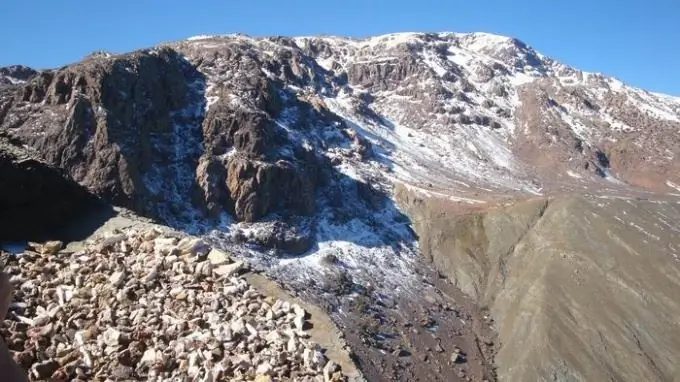- Author Nora Macey [email protected].
- Public 2023-12-16 10:17.
- Last modified 2025-01-23 08:47.
With a change in altitude, significant changes in temperature and pressure can be observed. The relief of the area can greatly influence the formation of the mountain climate.

Instructions
Step 1
It is customary to distinguish between mountain and high mountain climates. The first is typical for heights less than 3000-4000 m, the second - for higher levels. It should be noted that climatic conditions on high vast plateaus differ significantly from conditions on mountain slopes, in valleys or on individual peaks. Of course, they also differ from the climatic conditions characteristic of the free atmosphere over the plains. Humidity, atmospheric pressure, precipitation and temperature change quite strongly with altitude.
Step 2
As the altitude increases, the air density and atmospheric pressure decrease; moreover, the content of dust and water vapor in the air decreases, which significantly increases its transparency for solar radiation, its intensity significantly increases compared to the plains. As a result, the sky appears bluer and denser, and the light level is increased. On average, atmospheric pressure for every 12 meters of rise decreases by 1 mm Hg, but specific indicators always depend on the terrain and temperature. The higher the temperature, the more slowly the pressure decreases as it rises. Untrained people begin to experience discomfort due to low blood pressure already at an altitude of 3000 m.
Step 3
The air temperature also drops with altitude in the troposphere. Moreover, it depends not only on the height of the terrain, but also on the exposure of the slopes - on the northern slopes, where the influx of radiation is not so great, the temperature is usually noticeably lower than on the southern ones. At high altitudes (in alpine climates) the temperature is influenced by firn fields and glaciers. Fir fields are areas of special granular perennial snow (or even a transitional stage between snow and ice) that form above the snow line in the mountains.
Step 4
In the interior areas of mountain ranges in winter, stagnation of cooled air can occur. This often leads to temperature inversions, i.e. the temperature rises with increasing altitude.
Step 5
The amount of precipitation in the mountains to a certain level increases with height. It depends on the exposure of the slopes. The greatest amount of precipitation can be observed on those slopes that face the main winds, this amount additionally increases if the prevailing winds carry moisture-containing air masses. On leeward slopes, the increase in precipitation as it rises is not so noticeable.






